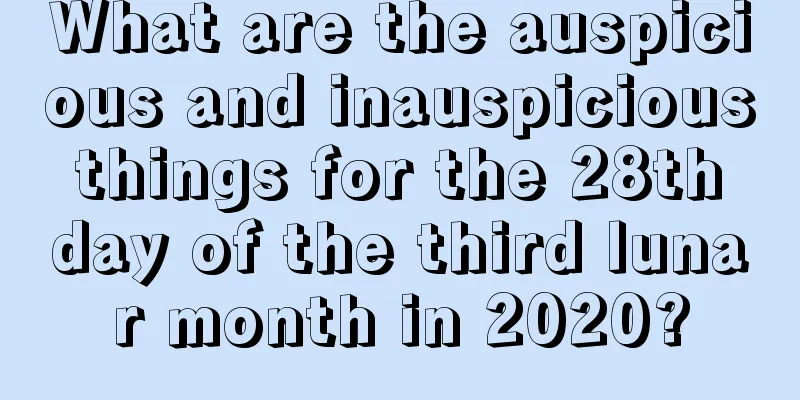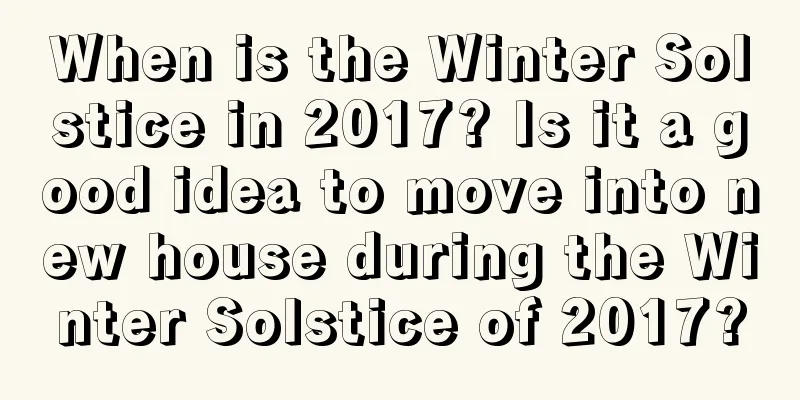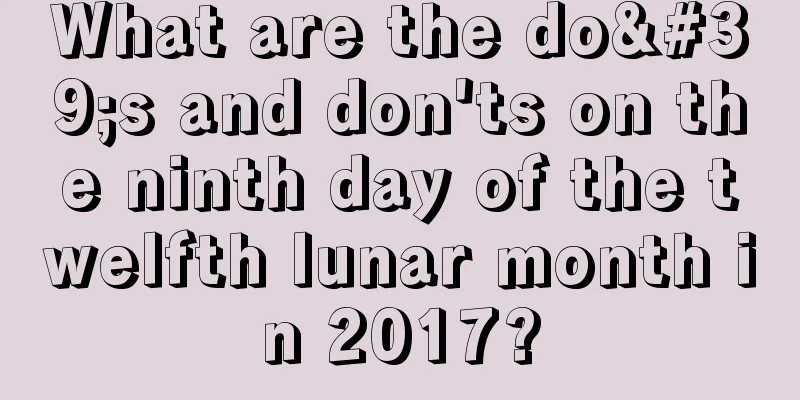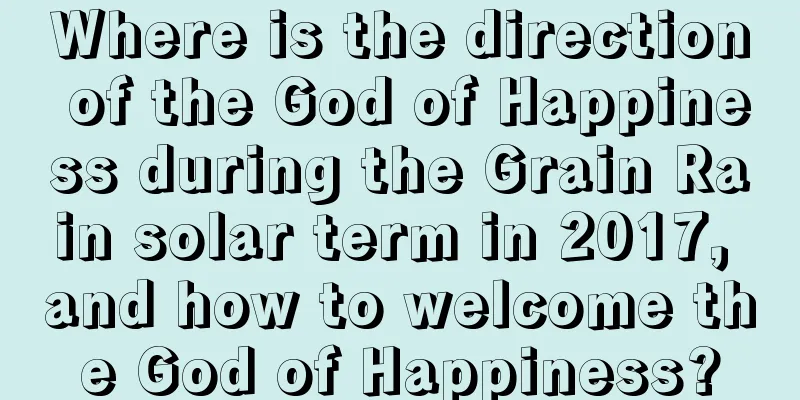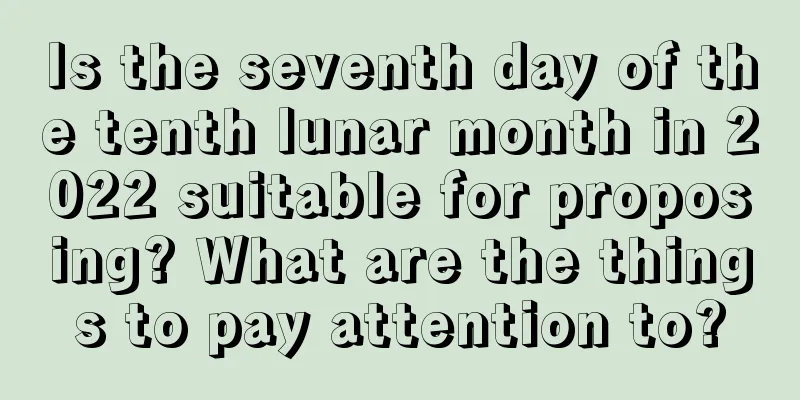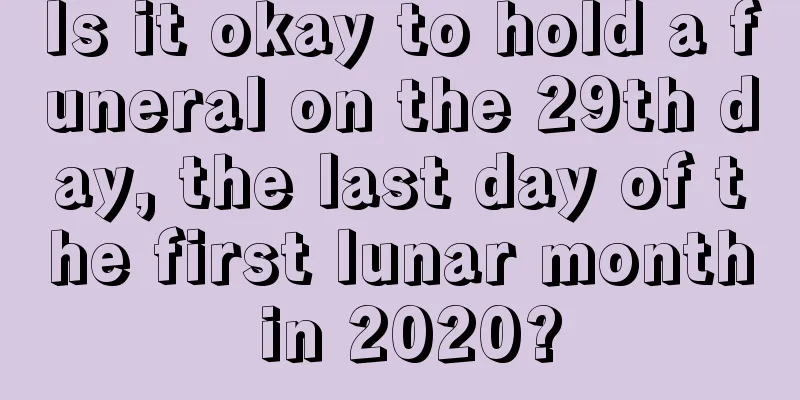When is the Spring Equinox? What is its origin?

Introduction: Our country has a long history, profound historical heritage and folk culture. The 24 solar terms are one of the ancient calendars used to record agricultural activities, and are a great crystallization of farming culture. The Spring Equinox is one of our 24 solar terms. So what does it mean, how is it defined, and does it have any historical origins? Let’s follow the editor to find out. Mr. Shui Mo summarized many festivals and solar terms in the second month of the lunar calendar to help people better understand how to face every day in February.When is the Spring Equinox?The Spring Equinox is the midpoint of the ninety days of spring. One of the 24 solar terms, it falls on March 20 of the Gregorian calendar every year when the sun is at 0° of ecliptic longitude (the vernal equinox). On the day of the vernal equinox, the sun shines directly on the earth's equator. The seasons in the northern and southern hemispheres are opposite. In the northern hemisphere, it is the vernal equinox, and in the southern hemisphere, it is the autumnal equinox. The Spring Equinox is the New Year in Iran, Türkiye, Afghanistan, Uzbekistan and other countries, and has a history of 3,000 years.The Spring Equinox is also a festival and sacrificial celebration. Ancient emperors had the ritual of worshiping the sun in spring and the moon in autumn. The Emperor of Zhou Dynasty offered sacrifices to the Sun at the Sun Altar. "Collected Explanations of the Seventy-two Seasons of the Lunar Calendar" states: "In the middle of February, the equinox means half, which is half of the ninety days, so it is called the equinox." Another book in "Spring and Autumn Annals: Yin and Yang Out and In, Parts 1 and 2" states: "The spring equinox is when yin and yang are half and half, so the day and night are equal and the cold and heat are balanced." "Book of Rites": "Sacrifice the sun on the altar." Kong Yingda's commentary: "It refers to the vernal equinox." Pan Rongbi of the Qing Dynasty wrote in The Chronicles of the Capital: “Sacrifices to the sun on the Spring Equinox and to the moon on the Autumn Equinox are grand national ceremonies, and scholars and common people are not allowed to offer sacrifices on their own. In folk activities, it is generally regarded as the official start of outing. Activities include: flying kites, women and children flying kites. And write blessings on the kite hoping that the gods in heaven will see them. 2. Wearing flowers in the hair and drinking: Men, women, young and old all wear flowers in the hair. Three. Picking wild vegetables in the wild: Zhu Shuzhen's "Ten Miscellaneous Poems on Spring Days": I have no mood to write or play the piano, and I am not in the mood to go outing and pick vegetables. In terms of food, there are spring vegetables, spring soup, spring wine and so on. The historical origin of the Spring Equinox and ancient storiesThe Spring Equinox was also called "the middle of the day", "the division of day and night", and "the mid-spring month" in ancient times. "The History of Ming Dynasty·Calendar 1" said: "The equinox is the point where the ecliptic and the red intersect. When the sun reaches this point, the day and night are equal." Therefore, the significance of the vernal equinox is, firstly, that the day and night are equal in one day, 12 hours each; secondly, in ancient times, the spring season lasted from the beginning of spring to the beginning of summer, and the vernal equinox is in the middle of the three months of spring, dividing the spring season equally."Yi Zhou Shu·Zhou Yue": "The middle solar terms of the third month of spring are Jingzhe, Chunfen, and Qingming." Dong Zhongshu of the Han Dynasty wrote in "Spring and Autumn Annals: Yin and Yang: The In and Out, Up and Down": "In the second month of spring, the sun is due east and the moon is due west. This is called the Spring Equinox. The Spring Equinox is when the sun and the moon are equal, so the day and night are equal and the cold and heat are balanced." Song Su Shi's poem "Snow after the Spring Equinox" reads: "Snow is rare after the Spring Equinox, and the half-opened peach and apricot blossoms are not impressive." Ming Wang Ao's "Zhen Ze Chang Yu Xiang Wei" says: "Two solar terms make up one season, and the yang energy rises a total of 42,000 miles, which is exactly the middle of heaven and earth, and the spring equinox." Xing Shuben's "Twenty-Four Solar Terms and Agricultural Activities - Spring Equinox" says: "During the Spring Equinox, the land of Hebei is more colorful, the temperature rises, and the rainfall increases." "Collected Explanations of the 72 Seasons in the Lunar Calendar" states: "In the middle of February (in the Xia calendar), fen means half, which is half of the ninety days, so it is called fen. Qiu has the same meaning." Dong Zhongshu of the Han Dynasty wrote in "Spring and Autumn Annals: Yin and Yang: The In and Out, Up and Down": "In the middle of spring, the sun is in the east and the moon is in the west. This is called the Spring Equinox. The Spring Equinox is when the sun and the moon are half and half, so the day and night are equal and the cold and heat are balanced." The corresponding phenological phenomenon in the ancient Yellow River Basin was "when the black bird arrives, thunder sounds and lightning begins" (see "Nongsang Tongjue"). At this time, overwintering crops in most parts of my country enter the spring growth stage. A folk proverb in central China goes, "On the Spring Equinox, the wheat starts to grow, and every moment of it is worth a thousand gold coins." The Spring Equinox is also a traditional festival. In the Zhou Dynasty, there were festival ceremonies on the Spring Equinox. "Jingchu Sui Shi Ji" by Liang Zonghuan of the Southern Dynasties recorded: "On the Spring Equinox, people plant fire-preventing grass on the roof. There is a bird like a crow, which crows before the rooster, and the people wait for this bird to enter the fields, which is taken as an omen." In the Ming Dynasty, trees were planted on this day in Zibo, Shandong Province, and spring wine was made. The Wenshui County Annals states: "On the Spring Equinox, people brew wine and mix cool food, and transplant flowers and trees." In ancient China, the Spring Equinox was divided into three stages: "The first stage is the arrival of the Yuan bird; the second stage is the sound of thunder; the third stage is the beginning of lightning." This means that after the Spring Equinox, swallows will fly from the south, and there will be thunder and lightning in the sky when it rains. The Spring Equinox is recorded in the ancient Chinese calendar as: "Three days before the Spring Equinox, the sun enters the equator." Summary: Through the above article, we know the definition of the Spring Equinox and the introduction of the origin of the Spring Equinox in classics, which makes us feel the long history of the Spring Equinox. We hope that everyone will like the above article. I wish you all a new and good start to the year in spring! |
<<: What month and day is the Spring Equinox? What are the taboos during the Spring Equinox?
Recommend
Is October 20th of the lunar calendar 2021 a good day for renovation?
The tenth month of the lunar calendar has warm wea...
Is it a good time to move into a new house on the 17th day of the seventh lunar month in 2019?
We all know that moving into a new house needs to...
Is it a good time to get engaged on the eighth day of the first lunar month in 2021? Characteristics of Rainy Weather
Introduction: In our traditional customs, it is ge...
What zodiac sign is your birthday on Qingming Festival? What's your work style?
Introduction: Qingming Festival is one of the impo...
Can I go out on July 21st of the lunar calendar in 2021? Is this a good day to travel?
Autumn begins in the seventh month of the lunar ca...
Is the fifth day of the seventh lunar month in 2019 an auspicious day for sacrifices? Is it appropriate to visit the graves and worship ancestors today?
Introduction: Sacrifice is an important folk activ...
What is the Bailu solar term and what customs does it have? What are the customs of the Bailu solar term?
Time moves quickly and will never stop for you jus...
When is the Dragon Boat Festival in 2022? Is the Dragon Boat Festival divided into the Big Dragon Boat Festival and the Small Dragon Boat Festival?
The Dragon Boat Festival is determined according t...
2017 June 19th day of the leap year: auspicious and unlucky time query, auspicious and unlucky time query
The arrival of the leap month of June in the luna...
Analysis of the position of the God of Happiness on the eighth day of the fifth lunar month in 2020
Analysis of the position of the God of Happiness ...
When is the Beginning of Summer in 2021? What day of the week?
Lixia is the seventh solar term in the twenty-four...
When is Mother's Day in 2018? When was Mother's Day introduced to China?
Who says that the love of a child can never repay ...
Is it suitable to pick up a car on the eighth day of the eighth lunar month in 2018?
The eighth month of the lunar calendar is also ca...
Is it a good idea to move house on the first day of the twelfth lunar month in 2018? Can I move to a new house?
In the twelfth month of the lunar calendar, the c...
How to use the Feng Shui compass to look at the Feng Shui of a grave?
Introduction: Feng Shui compass, also known as com...
